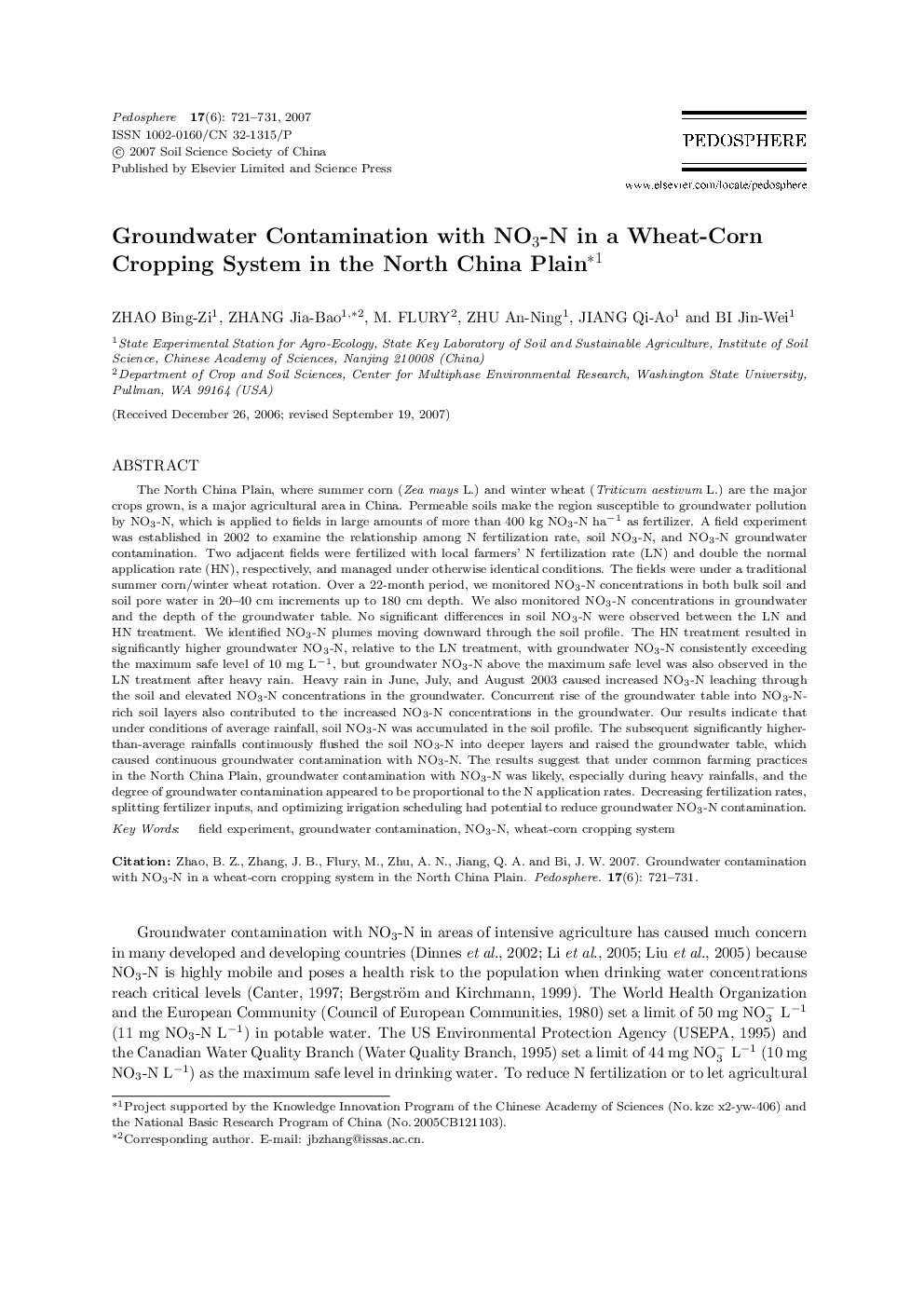| کد مقاله | کد نشریه | سال انتشار | مقاله انگلیسی | نسخه تمام متن |
|---|---|---|---|---|
| 4582093 | 1333736 | 2007 | 11 صفحه PDF | دانلود رایگان |

The North China Plain, where summer corn (Zea mays L.) and winter wheat (Triticum aestivum L.) are the major crops grown, is a major agricultural area in China. Permeable soils make the region susceptible to groundwater pollution by NO3-N, which is applied to fields in large amounts of more than 400 kg NO3-N ha−1 as fertilizer. A field experiment was established in 2002 to examine the relationship among N fertilization rate, soil NO3-N, and NO3-N groundwater contamination. Two adjacent fields were fertilized with local farmers' N fertilization rate (LN) and double the normal application rate (HN), respectively, and managed under otherwise identical conditions. The fields were under a traditional summer corn/winter wheat rotation. Over a 22-month period, we monitored NO3-N concentrations in both bulk soil and soil pore water in 20{40 cm increments up to 180 cm depth. We also monitored NO3-N concentrations in groundwater and the depth of the groundwater table. No significant differences in soil NO3-N were observed between the LN and HN treatment. We identified NO3-N plumes moving downward through the soil profile. The HN treatment resulted in significantly higher groundwater NO3-N, relative to the LN treatment, with groundwater NO3-N consistently exceeding the maximum safe level of 10 mg L−1, but groundwater NO3-N above the maximum safe level was also observed in the LN treatment after heavy rain. Heavy rain in June, July, and August 2003 caused increased NO3-N leaching through the soil and elevated NO3-N concentrations in the groundwater. Concurrent rise of the groundwater table into NO3-N- rich soil layers also contributed to the increased NO3-N concentrations in the groundwater. Our results indicate that under conditions of average rainfall, soil NO3-N was accumulated in the soil profile. The subsequent significantly higher-than-average rainfalls continuously flushed the soil NO3-N into deeper layers and raised the groundwater table, which caused continuous groundwater contamination with NO3-N. The results suggest that under common farming practices in the North China Plain, groundwater contamination with NO3-N was likely, especially during heavy rainfalls, and the degree of groundwater contamination appeared to be proportional to the N application rates. Decreasing fertilization rates, splitting fertilizer inputs, and optimizing irrigation scheduling had potential to reduce groundwater NO3-N contamination.
Journal: Pedosphere - Volume 17, Issue 6, December 2007, Pages 721-731